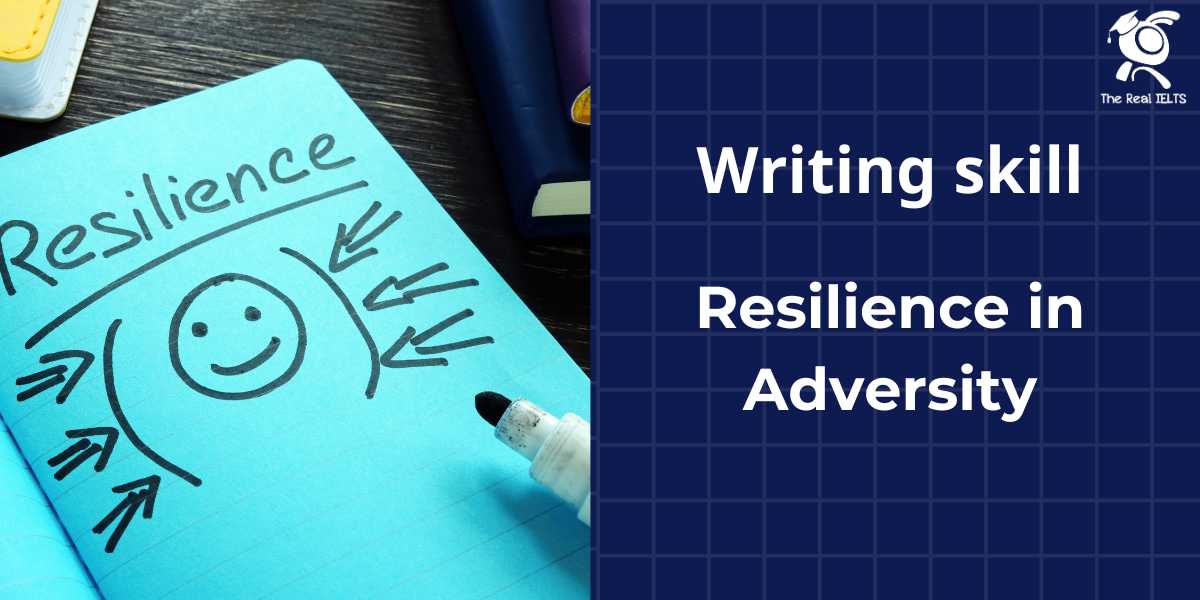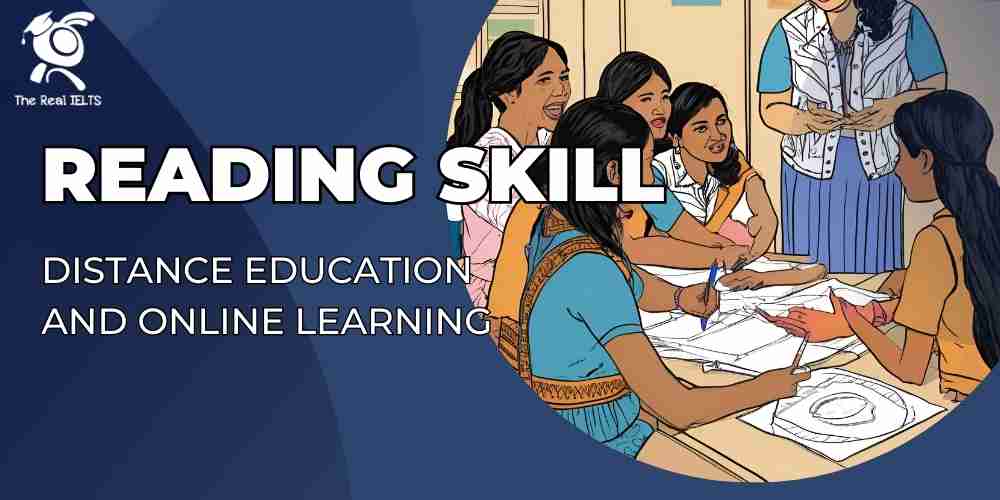Bài Writing về chủ đề Động lực Adversity cá nhân, Self-Help. Chủ đề này ít được thi nhưng bạn sẽ gặp nhiều khi tìm chủ đề này ở trên internet. Ngoài ra nhiều đầu sách Self Help nổi tiếng cũng được dịch ra nhiều bằng tiếng Anh, nên chủ đề Writing này có tính tham khảo và luyện tập.
Từ vựng và cụm từ vựng cần sử dụng trong chủ đề Adversity
- resilience (sự kiên cường, sự đàn hồi)
- adversity (khó khăn, thử thách)
- navigate (điều hướng)
- components (các thành phần)
- emerge (nổi lên, xuất hiện)
- equilibrium (cân bằng)
- optimism (lạc quan)
- perseverance (kiên trì)
- adaptability (khả năng thích ứng)
- setbacks (thất bại, rủi ro)
- proactive (chủ động)
- reframing (định hình lại)
- buffer (cái chắn)
- transformative (biến đổi, thay đổi)
- wellbeing (sức khỏe tinh thần)
- weathering (vượt qua, chịu đựng)
- aspirations (nguyện vọng, hoài bão)
- determination (quyết tâm)
- courage (can đảm)
Dàn ý tiếng Anh chuẩn bị cho bài Writing
I. Introduction
A. Definition of resilience
B. Importance of resilience in facing challenges
C. Thesis statement: Resilience is a vital characteristic that enables individuals to overcome obstacles and thrive in the face of adversity.
II. Understanding Resilience
A. Definition and components of resilience
B. Examples of resilient individuals or communities
C. The role of mindset in building resilience
III. Types of Challenges
A. Personal challenges (e.g., health issues, loss of a loved one)
B. Academic or professional challenges (e.g., failure, rejection)
C. Societal challenges (e.g., discrimination, economic hardships)
IV. Strategies for Building Resilience
A. Developing a positive mindset
B. Cultivating social support networks
C. Setting realistic goals and maintaining a sense of purpose
D. Practicing self-care and stress management techniques
V. Case Studies of Resilience
A. Famous individuals who have overcome significant challenges (e.g., Oprah Winfrey, Malala Yousafzai)
B. Personal anecdotes or examples of resilience in everyday life
VI. The Impact of Resilience
A. Improved mental health and well-being
B. Enhanced problem-solving and coping skills
C. Increased adaptability and flexibility in the face of change
VII. Conclusion
A. Restate the importance of resilience in overcoming challenges
B. Emphasize the role of resilience in personal growth and success
C. Call to action: Encourage readers to cultivate resilience in their own lives.
Triển khai bài viết: Overcoming Challenges: Resilience in Adversity
Introduction
In the journey of life, individuals encounter various challenges that test their strength, resolve, and ability to adapt. At the heart of navigating these obstacles lies resilience, a fundamental trait that empowers individuals to overcome adversity and emerge stronger. This essay explores the significance of resilience in facing challenges, examines its components, and discusses strategies for cultivating resilience in the face of adversity.
Understanding Resilience
Resilience can be understood as the capacity to bounce back from setbacks, withstand pressure, and maintain a sense of equilibrium amidst adversity. It encompasses psychological, emotional, and social components that enable individuals to navigate difficult circumstances effectively. For instance, resilient individuals exhibit traits such as optimism, perseverance, and adaptability. Consider the example of Nelson Mandela, who, despite enduring decades of imprisonment, emerged as a symbol of hope and reconciliation for South Africa.
Types of Challenges
Challenges come in various forms, ranging from personal struggles to societal upheavals. Personal challenges may include health crises, loss of loved ones, or financial difficulties. Academic or professional challenges, such as failure or rejection, can also test one’s resilience. Additionally, societal challenges like discrimination, poverty, or political unrest can pose significant obstacles. Yet, it is through confronting and overcoming these challenges that individuals develop resilience and fortitude.
Strategies for Building Resilience
Building resilience is a proactive process that involves cultivating certain habits and mindsets. One strategy is to foster a positive mindset, which involves reframing setbacks as opportunities for growth and learning. Additionally, maintaining strong social support networks provides a buffer against stress and fosters resilience. Setting realistic goals, staying focused on one’s values and purpose, and practicing self-care and stress management techniques are also essential strategies for building resilience.
Case Studies of Resilience
Numerous examples illustrate the power of resilience in overcoming adversity. Oprah Winfrey, for instance, rose from a challenging upbringing to become one of the most influential media moguls in the world. Malala Yousafzai, despite facing violence and oppression, became a global advocate for girls’ education and a Nobel laureate. These individuals exemplify the transformative potential of resilience in the face of adversity.
The Impact of Resilience
The impact of resilience extends beyond individual well-being to encompass broader societal benefits. Studies have shown that resilient individuals are better equipped to cope with stress, maintain positive relationships, and achieve success in various domains of life. Moreover, resilient communities are more capable of weathering crises and fostering collective resilience. By cultivating resilience, individuals and communities can navigate challenges with greater confidence and resilience.
Conclusion
In conclusion, resilience is a vital attribute that enables individuals to overcome challenges and thrive in the face of adversity. By understanding the components of resilience and adopting strategies for building it, individuals can develop the strength and resilience needed to navigate life’s ups and downs successfully. As we reflect on the stories of resilient individuals and communities, let us be inspired to cultivate resilience in our own lives, empowering ourselves to overcome obstacles and pursue our aspirations with determination and courage.
Cấu trúc ngữ pháp đã sử dụng
- Cấu trúc ngữ pháp:
- Động từ trong dạng V-ing: Ví dụ: overcoming, navigating, understanding.
- Cụm danh từ: Ví dụ: types of challenges, strategies for building resilience.
- Mệnh đề quan hệ: Ví dụ: who, which (trong câu “Consider the example of Nelson Mandela, who…”).
- Câu điều kiện: Ví dụ: if (trong câu “if they are better equipped to cope with stress…”).
- Câu giả định: Ví dụ: would (trong câu “individuals and communities would navigate challenges…”).
- Câu hỏi: Ví dụ: “How do resilient communities foster collective resilience?”
- Cấu trúc câu:
- Câu đơn: Ví dụ: “Resilience can be understood as the capacity to bounce back from setbacks.”
- Câu phức: Ví dụ: “At the heart of navigating these obstacles lies resilience, a fundamental trait…”
- Câu hỏi và câu trả lời: Ví dụ: “What are the strategies for building resilience? Setting realistic goals…”
- Câu mệnh lệnh: Ví dụ: “Consider the example of Nelson Mandela.”
- Câu so sánh: Ví dụ: “Resilient communities are more capable of weathering crises than…”
- Câu phụ động: Ví dụ: “Numerous examples illustrate the power of resilience in overcoming adversity.”
Đọc lại bài Writing cũ: Writing skill part 7: Environmental Sustainability: Individual Actions, Global Impact.















